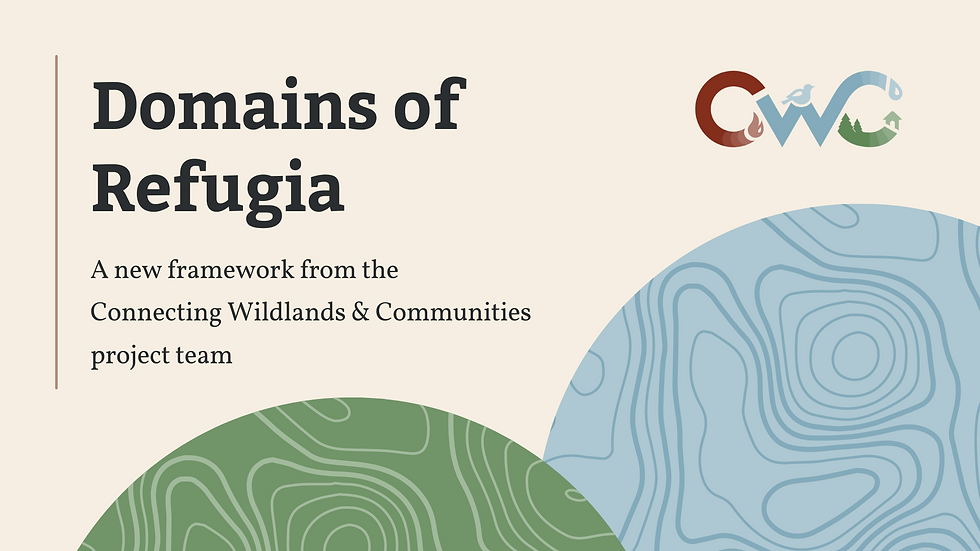CWC Project Team Publishes "Domains of Refugia" Framework
- Climate Science Alliance

- Oct 28, 2021
- 2 min read
Connecting Wildlands and Communities project team members have developed a new framework to help us understand and locate areas of refuge that can protect plants and animals from multiple threats, including climate change. Learn how their “Domains of Refugia” framework, published in Conservation Biology, can inform conservation efforts on today’s blog.

In conservation planning, assessing the potential for refugia largely focuses on climate change data. However, by not considering the impacts of multiple threats, our selection of refugia is limited or incorrect – potentially undermining conservation efforts.
In an article published in Conservation Biology on October 26, 2021, Connecting Wildlands and Communities project researchers propose a new conceptual framework, the “Domains of Refugia,” that can help us understand where shelter from multiple drivers of change can provide habitat for plants and animals to persist in our world.
Considering exposure to multiple threats can inform planning practices to better conserve biodiversity, and in particular, better identify sites that serve as refugia and can be targets of limited conservation resources.
“A Landscape-Scale Framework to Identify Refugia From Multiple Stressors” is open-access and publicly available to read here:
Publication Abstract:
From a conservation perspective, quantifying potential refugial capacity has been predominantly focused on climate refugia, which is critical for maintaining the persistence of species and ecosystems. However, protection from other stressors, like human-induced changes in fire and hydrology, that cause habitat loss, degradation and fragmentation are also necessary to ensure that conservation efforts focused on climate are not undermined by other threats. Thus, conceptual and methodological advances for quantifying potential refugia from multiple anthropogenic stressors are important to support conservation efforts. We propose a new conceptual approach, the domains of refugia, to assess refugial capacity, identifying areas where exposure to multiple stressors is low. Our framework uses patterns of environmental variability, thresholds of resilience, and extent and intensity of stressors to identify areas of potential refugia from a suite of ongoing anthropogenic stressors. To demonstrate the utility of this framework, we illustrate how refugial conditions can be characterized and identified using a Southern California landscape. Sites with high refugial capacity, the super-refugia sites, have on average 30% less frequent extremely warm summers, 20% less frequent fire events, 10% less exposure to altered channels and riparian areas, and 50% fewer trails than the surrounding landscape. Our results suggest that super-refugia sites (∼ 8,200 km2) for some natural communities are under-represented in the existing protected area network, a finding that can inform efforts to expand protected areas. Our case study highlights how considering exposure to multiple stressors can inform planning and practice to conserve biodiversity in a changing world.
Spread the word!
Share the publication or this blog post with your colleagues, friends, and family. Check out our graphics packet featured below that helps break down the domains of refugia concepts and why it is important. Last but not least – be sure to tag us and use #Connect4Wildlands
Learn more about the Connecting Wildlands and Communities Project here:
Connecting Wildlands and Communities is supported by California Strategic Growth Council’s Climate Change Research Program with funds from California Climate Investments – Cap-and-Trade Dollars at Work.



















